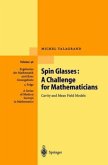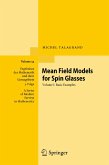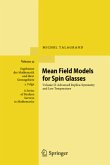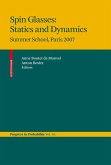In the eighties, a group of theoretical physicists introduced several models for certain disordered systems, called "spin glasses". These models are simple and rather canonical random structures, that physicists studied by non-rigorous methods. They predicted spectacular behaviors, previously unknown in probability theory. They believe these behaviors occur in many models of considerable interest for several branches of science (statistical physics, neural networks and computer science).
This book introduces in a rigorous manner this exciting new area to the mathematically minded reader. It requires no knowledge whatsoever of any physics, and contains proofs in complete detail of much of what is rigorously known on spin glasses at the time of writing.
This book introduces in a rigorous manner this exciting new area to the mathematically minded reader. It requires no knowledge whatsoever of any physics, and contains proofs in complete detail of much of what is rigorously known on spin glasses at the time of writing.
From the reviews: "The book presents most of the technical tools available today for a rigorous analysis of random mean field models. It will be indispensable for anyone working in the field." (Anton Bovier, Combinatorics, Probability & Computing, Issue 13, 2004) "This book seeks to start from basics ... to develop the rigorous theory, in almost complete detail. ... this is a book of ideas and calculations which build upon each other to create a rich and informative theory." (David Aldous, SIAM Reviews, Vol. 47 (1), 2005) "Each section of the book ends with some comments on the literature. ... The author has ... put a great effort into rendering the exposition as clear as possible. ... The book will, certainly, find a favorite place on the desk of anyone working in the field." (Anton Bovier, Zentralblatt MATH, Vol. 1033 (8), 2004) "This is a book on structures, which are very interesting for physics and - at the same time - rather fundamental for mathematics. ... In conclusion, this is a very important, impressive book, written by a prominent mathematician and leading expert in the field ... . the book remains indispensable as a basic introduction and reference on this extremely difficulty and interesting subject." (EMS Newsletter, March, 2006)








